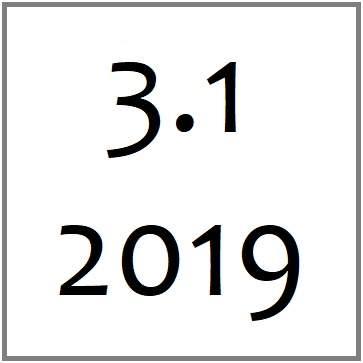Curatorial/Artist Statement
What Puerto Ricans have called life post-María refers to the ways in which we experience the everyday after having survived the climate disaster that was hurricane María, which in late September of 2017 ravaged the archipelago and traumatized Puerto Ricans living in the diaspora: waiting to hear from their loved ones, and their loved places. Most of us were anxiously waiting for the phone to ring to find out how our parents, grandparents, extended families and friends had fared. Glued to televisions and computer screens or simply listening to the radio in the hopes of getting any news, many of us channeled climate anxiety through activism (refer to my piece on “Decolonial Activism on Facebook”), which itself looked and sounded differently. As illustrated in The Intercept’s “A Message From the Future” New York Congresswoman, Alexandria Ocasio-Cortez used the post-María moment as a catalyst for her Green New Deal proposition: referring to the catastrophe as the result of climate change, itself caused by fossil fuel dependency. Folks living in the territory, however, were focused on finding ways to make every day more bearable, given the fact that there was no water or electricity for months (and for some even a year). NPR’s All Things Considered highlighted one way in which Puerto Ricans were appeasing climate anxiety and life with no electricity: they played plena. Hence, plena expresses The Need for Resilience.
In the following piece I engage in multimodal, creative-critical scholarship by curating scenes wherein plena sounds out a rhetoric of resilience. Joining scholars theorizing plena’s cultural significance (Guerrero, 2003; Rivera, 2013; Miller, 2004) I highlight the genre’s multifaceted rhetoricity. A seemingly dying genre in mainstream popular cultures, the Puerto Rican plena sounds out most loudly during the winter holidays, a practice that has been carried over to Puerto Rican diasporas. As Miller points out, “sound recordings of plena provided a common point of reference and nostalgia for thousands of working-class Puerto Ricans who had migrated to New York and other U.S. cities from different parts of the island” (p. 44). Plena Cruzando el Charco, or crossing the “pond” of the Atlantic Ocean, fosters a kind of nostalgia for a Puerto Rican past that is most closely tied to cultural nationalism and celebrations of identity. It also tends to take shape as an emblematic genre of the Puerto Rican jíbaro/a/x—a folkloric figure of Puerto Rican peasants working the fields under successive colonial regimes, whether coffee for Spain, or sugar for the United States—plena is the musical genre that generated stories that were passed on from town to town, from generation to generation, including its diasporic populations. And yet, “the identity politics of origins, racial identity, and national character are played (out) by musicians, writers, and artists” such as in the case of Los Pleneros de la 23 in “Cimarrón” where the musicians “offer us a microhistory of the plena, one that associates the form first with el negro, then with el indio, and finally with el jíbaro, Puerto Rico’s rural homesteader, cowboy, gaucho, guajiro, a figure usually represented as ‘white’” (38).
As an Afrodiasporic genre using call and response, plena music sounds out stories within the context of life and work situated in the Caribbean.
It was work and the life-experience of Puerto Rican working people that made for the
substance and social context of the plena in the streets and bars…where it was born,
and it is that same reality which has remained the most basic reference-point for plena
music down to the present (Flores, 2000, p. 91, cited in Guerrero, 2013, p. 169).
But beyond work, plena sounds out stories of survival. Miller again: “some of the earliest practitioners of plena—perhaps even the musicians who introduced it in the island—were former slaves and their children, known as los ingleses who arrived in Ponce at the turn of the century from various parts of the British Caribbean.” (Miller, 2004, p. 42). Many of the stories told through plena involve tragic events, such as the death of a woman called Elena, or the passing of a hurricane, ironically called temporal in Puerto Rican Spanish. However, these stories cannot be separated from Puerto Rico’s (and arguably the Caribbean’s) context of coloniality; such is the case in the song “Tintorera del Mar” which makes reference to the death of a U.S. American lawyer who got killed by a female shark. For most Puerto Ricans, then, the sound of the pandero (hand-drum) signifies survivance (Powell, 2002) but also resistance and defiance.
